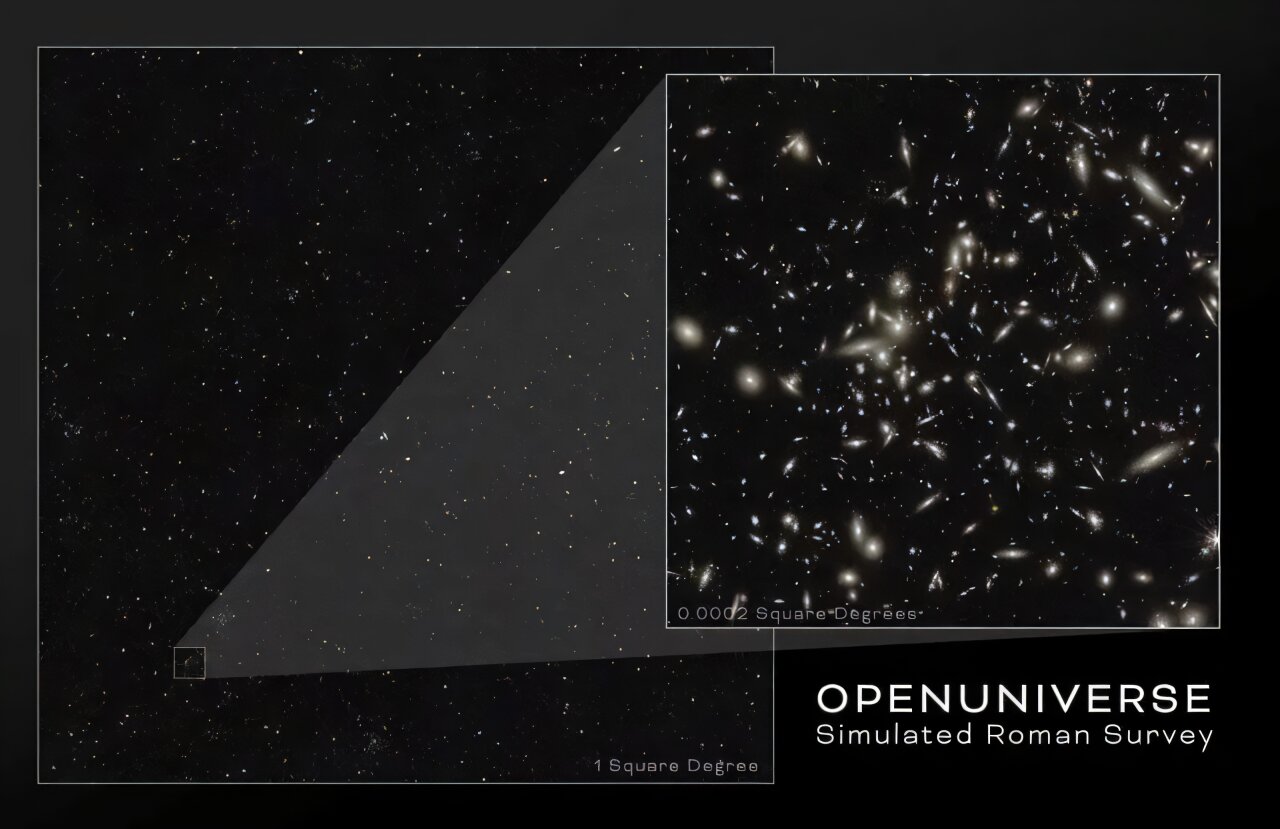Astronomers have released a series of more than a million simulated images that show what the space will look like through NASA’s future Nancy Grace Roman Space Telescope. The modeled view will help scientists better understand its scientific capabilities.

Creation of a synthetic Universe
“We used a supercomputer to create a synthetic Universe, simulated billions of years of evolution and traced the path of every photon from every cosmic object to the telescope’s detectors. This is the largest and most realistic synthetic study of the Universe to date,” explained Michael Troxel, associate professor of physics at Duke University.
The OpenUniverse project was based on the work of the Theta supercomputer at the US Argonne National Laboratory. In nine days, calculations that would have taken more than 6,000 years on a conventional computer were completed. The 400 terabyte simulated dataset also includes previews of observations from the Vera Rubin Observatory and simulations from NASA’s ESA Euclid mission.
Scale of simulations
The simulations cover an area of 702 degrees of sky — that’s more than 300 full moons — and span over 12 billion years in time-space. This allows scientists to study in detail the influence of dark energy and dark matter on the evolution of the cosmos.
Innovative approaches to data analysis
Scientists will be able to study 100 million synthetic galaxies, tracing their evolution. The data obtained is being used to create an alert system that will report space phenomena recorded by the Nancy Grace Roman Space Telescope. Since the volumes of data will be extremely large, it cannot be processed manually. For this purpose, machine learning algorithms are being developed to help identify and analyze important space events.
“The main challenge is to determine whether the event is a special type of supernova that can be used to map the expansion of the Universe, or something similar but of little significance,” said Alina Kiessling, a researcher at NASA’s Jet Propulsion Laboratory.
Preparing for the launch of the telescopes
Although the Euclid telescope has already begun operations, the Vera Rubin Observatory is due to join later this year, and the Nancy Grace Roman Space Telescope is scheduled for launch in May 2027. Synthesized images can help prepare for real-world data processing. One study of the Roman Telescope, which will last less than a year, has the potential to replace thousands of years of work by the Hubble and James Webb telescopes. The telescope will show how the Universe expanded, create 3D maps of galaxies and reveal new details about star formation.
Comparison of real observations with simulations will allow us to assess the accuracy of the predictions. Every discrepancy could indicate new physical laws in the Universe. Modeling will be an important tool to refine these discoveries and test scientific theories.
“We expect many scientific discoveries that could qualify for the Nobel Prize,” Kiessling noted.
According to phys.org


